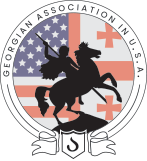Georgia, known to its inhabitants as Sakartvelo (Land of the Georgians), is situated in the western half of the Caucasian isthmus. Given its strategic importance as a mountainous redoubt between Asia and the plains of Russia, and its economic importance in East-West trade, Georgia has always been subject to warring empires and constant migrations. This is reflected in the culturally and ethnically heterogeneous society we see today. It is estimated there are representatives of over one hundred different nations in Georgia. The state’s multiethnicity is reflected by a multiplicity of religions. The religion of most Georgians is Georgian Orthodoxy, a branch of Eastern Orthodoxy. However, there is also a small number of Georgian Catholics and larger numbers of Georgian Muslims in Achara (south west Georgia) and along the state’s southern periphery. The Ossetians and Abkhazians are mostly Eastern Orthodox, the Azeris, Assyrians and Kurds are mostly Muslim, and the Armenians, Greeks and Russians are Gregorian, Greek Orthodox and Russian Orthodox respectively. Georgia is noted for its religious tolerance and the capital of Tbilisi has for centuries hosted synagogues, churches of different denominations, and mosques.
Georgia is a small but geographically and climatically diverse country. It occupies 27,657 square miles (approximately twice the size of Belgium). Two thirds of Georgian territory is mountainous, and there are 25,000 rivers, many of which are used for hydroelectric power. In between the mountains in the north and south of the country lie the fertile plains of the Colchis lowlands in the west and the Kakhetian and Lower Kartlian plains in the east where most of the population lives. There are many different micro-zones of flora within Georgia, determined by altitude and climatic variation (semi-desert, sub-alpine, alpine). On Georgia’s northern border is the Russian federation. To the South are Turkey and the Republic of Armenia, and to the West and East are the Black Sea and the Republic of Azerbaijan respectively. The northern part of the country is dominated by the Greater Caucasian Mountain range and the south by the Southern Georgian Highlands.
The Georgian language is part of the south-west Caucasian group of languages (Zan [Mengrelo-Chan], Svan, and Georgian proper [Kartuli]). It does not belong to any of the world’s major language categories (Indo-European, Semitic etc.). It has its own alphabet from at least the fifth century AD, since when there have been two major modifications. The first Georgian literary works to reach us appeared in the fifth century AD Currently 98.2% of Georgians consider Georgian their native tongue and all business, politics and most cultural activities within the state are conducted in Georgian.

In their diet and social attitudes, Georgians have much in common with neighboring Mediterranean cultures. They share the traditions of hospitality with Middle Eastern cultures and lavish attention on foreign guests. They have a high regard for education, and most children are encouraged to attend college or university. Georgians retain a strong regional consciousness, although internally they are diverse. There are a number of regional groupings such as the Mingrelians, Gurians, Kakhetians and others, who claim specific regional characteristics. Different regions have their own types of food, dance, music and folklore, but all are Georgian and share a passion for polyphonic song and spectacular dance. Georgians have their own national sports, but the most popular sports today are soccer and rugby.
To learn more about current events in Georgia, we recommend visiting these websites
For analysis that also occasionally focuses on Georgia, you can visit
We continuously add sources to this list, so please come back for refreshed pages.

